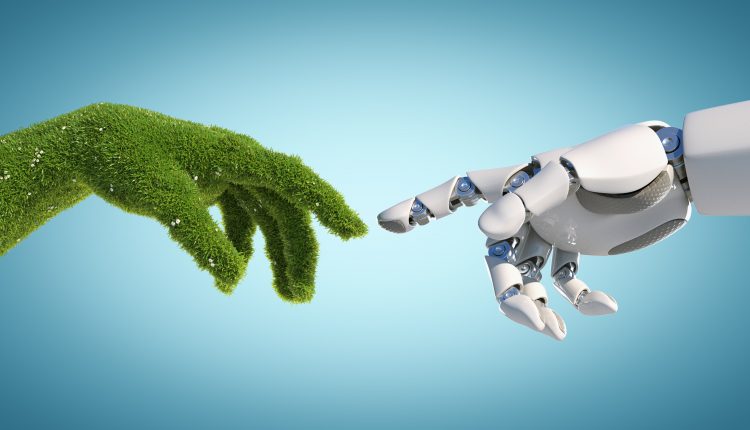Sustainable cloud-driven innovation
Sustainable IT is a key priority for CIOs today. Abdul Rahman Al Thehaiban, Managing Director, Turkey, Middle East & Africa, Google Cloud, explains how the company is reducing environmental impact with the cleanest cloud in the industry

Why should CIOs and CTOs care about sustainability?
Today, sustainability is a top priority for almost all businesses, and rightly so. Multinational corporations account for 20% of all global CO2 emissions, and executives want to make an impact in this area. Not only that, but it is clear customers care about sustainability as well. According to research from the National Retail Federation and IBM, 57% of consumers are willing to change their spending habits if it means reducing their environmental impact.
Organisations are also increasingly finding that sustainability efforts make business sense. According to a study by the United Nations Global Compact and Accenture, “between 2013-2019, companies with consistently high environmental, social and governance (ESG) performance enjoyed 4.7x higher operating margins and lower volatility than low ESG performers over the same period.
Organisations want to support a cleaner, healthier, more sustainable world and look for tools, solutions, and new technologies to help them. Cloud providers will play a critical role in helping organisations achieve these goals – 75% of global IT leaders say sustainability is important when selecting a cloud provider, with 51% stating it as a major consideration, and an additional 24% stating it is a must-have.
What sustainability initiatives are you embracing throughout 2021?
Sustainability objectives are, and always have been, central to every area of Google’s operations. In 2007, we were the first major company to become carbon neutral. Today, we have matched 100% of our electricity consumption with renewable energy purchases on an annual and global basis – what is often referred to as a 100% renewable energy target in the market.
We remain the largest annual corporate buyer of renewable energy and the only major cloud provider to purchase enough renewable energy to match our electricity consumption, matching our annual global electricity consumption for the fourth year running in 2021. Moreover, 90% of Google Cloud waste is currently diverted from landfills, and we have achieved a Power Usage Effectiveness (PUE) of 1.10, compared to the global average of 1.58.
Through innovations in artificial intelligence and machine learning, our data centers are twice as energy-efficient as an average enterprise data centre. We’ve also been able to cut the energy used to cool our data centres by 30%. For necessary energy consumption, our engineers have designed a first-of-its-kind system to shift the timing of non-urgent customer compute tasks to when carbon-free power sources are most plentiful, optimising hour-by-hour guidelines to increase the level of lower-carbon energy consumed. We’re also introducing data-driven decarbonisation and the deployment of sustainability bonds.
We recently announced our most ambitious sustainability goal yet. By 2030, we intend to be the first major company to operate on carbon-free energy, in all locations, at every hour of the day. Of course, this is far more challenging than the traditional approach of matching global annual energy usage with renewable energy, but we’re working on getting this done by 2030.
How can customers work with Google Cloud to help realise their own sustainability goals?
Cloud technology presents a tremendous opportunity to accelerate meaningful and positive environmental change. Public cloud technology is leading efforts to streamline and decarbonise business processes, but the drive for sustainability within technology is far from over. From reducing the emissions of digital applications and infrastructure to getting smarter about how you source and trace materials, the technologies available on Google Cloud can help organisations achieve their own sustainability goals.
We make sure our customers can use our technology and information to help build their own climate action plans. We work alongside our customers to pinpoint their unique opportunities for becoming increasingly sustainable and how they can use our technologies at every stage of the supply chain.
To help our customers decarbonise the electricity consumed by their cloud applications, we share the average hourly Carbon-Free Energy Percentage (CFE%) for most of our Google Cloud regions. In addition, we offer a tool providing this data— a Google Cloud region picker—that helps customers assess key inputs like price, latency to their end-users and carbon footprint as they choose which Google Cloud region to run on.
Customers can also use products like BigQuery and Vision AI to manage their data in real-time and glean insights that can help them decarbonise their operations and improve defect detection accuracy, eliminate waste, reduce production time, and increase customer satisfaction.
Google Cloud’s partnership with consumer goods brand Unilever is just one example of how organisations can build their own plan. Announced in September last year, the partnership will combine the power of cloud computing, satellite imagery, and AI to build a more complete picture of the ecosystems intersecting with Unilever’s supply chain. In providing a more holistic view of these environments, we hope to raise sustainable sourcing standards and directly support Unilever’s existing work with other technology partners to achieve a deforestation-free supply chain by 2023.
As we enter our most ambitious decade yet, collaborative innovation will be at the forefront of our sustainability efforts at Google Cloud. We will work to empower every one of our partners, whether businesses, governments, or individuals, to achieve a more sustainable tomorrow.





